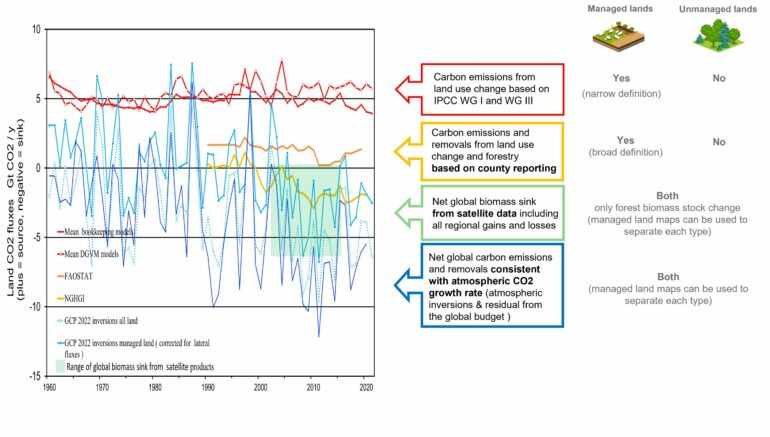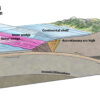Global forests are crucial in the fight against climate change, but the exact role they play remains uncertain. Estimates of their impact vary widely, with some suggesting they emit approximately 6 billion metric tons of CO2 while others indicate they absorb up to 8 billion metric tons.
This uncertainty of 22% in total global greenhouse gas balance makes it impossible to assess if the world is on track staying under 2 degrees of climate change and it impedes investments in forest carbon management. This must be resolved, according to Gert-Jan Nabuurs from Wageningen University & Research in a new study published in Communications Earth & Environment.
Under the Kyoto Protocol, nations agreed to include greenhouse emissions and removals resulting from “direct human-induced effects” in their climate goals. However, the Intergovernmental Panel on Climate Change (IPCC) recognized that human-induced effects on land are intertwined with environmental factors such as rising atmospheric CO2 levels (indirect effects). These two categories cannot be separated using current national greenhouse gas inventory methods.
As a practical solution, the IPCC Guidelines introduced the concept of “managed land”—designating land where countries apply human interventions and practices for production, ecological or social purposes as a proxy for anthropogenic effects.
Uncertainty on the role of forests in climate change arises, among other things, because only managed forests (constituting around 55% of global forests) are reported for their CO2 contributions. Unmanaged forests are often viewed as something that countries have no control over and are thus not liable for the emissions occurring from it.
Various approaches, including global modeling, National Greenhouse Gas Reporting, remote sensing, and carbon budget balancing from fossil fuel emissions, employ different interpretations of “managed” and “unmanaged.” Consequently, estimates range between forests acting as a CO2 source of approximately plus 6 billion metric tons to an net uptake of minus 8 billion metric tons.
This uncertainty complicates the ability to gauge progress toward net-zero emissions needing to stay under 2 degrees of climate change. By 2050, the land use sector is expected to remove up to 8 to 14 billion metric tons of additional CO2-equivalent from the atmosphere each year as estimated by the IPCC. To achieve this, accurate estimation is imperative.
In the recent publication in Communications Earth & Environment, Nabuurs and colleagues from other universities gathered all available estimates for the role of forests in the global climate. The results from various methods such as global vegetation models, ground-based forest inventories, statistics, and remote sensing and inversions were compiled. A huge variation was found.
The researchers argue that it is time for countries and other entities to begin reporting on all forest lands, both managed and unmanaged. The additional information on unmanaged forests would fill a knowledge gap and help track progress toward global temperature targets and make the methods more complete and comparable.
The requisite data and methods for countries to do so are available. Countries can incorporate the best available estimates of emissions and removals from unmanaged lands in their reporting, drawing on open-access ground-based data, earth observation and modeling. Initially, estimates of greenhouse gas flux from unmanaged land could be included voluntarily for informational purposes in country reporting. Subsequently, they could factor into official accounting for climate targets. This approach would incentivize the inclusion of carbon-rich unmanaged forests that are vulnerable to climate change and human activities.
Recognizing the current challenges of COP meetings, which tend to yield diminishing results, the team proposes a more bilateral approach while the UN negotiations at COPs can work on taking up the full land use sector. Bilaterally, industrialized nations can already provide support and expertise to developing countries in the realm of forest carbon analysis.
More information:
Gert-Jan Nabuurs et al, Reporting carbon fluxes from unmanaged forest, Communications Earth & Environment (2023). DOI: 10.1038/s43247-023-01005-y
Provided by
Wageningen University
Citation:
High uncertainty in climate impact of global forests: Experts call for more complete estimation (2023, September 28)



